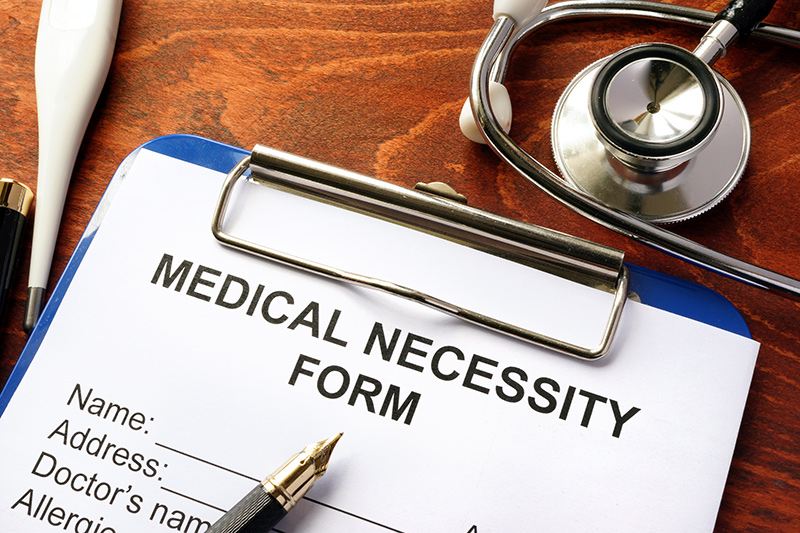Medical necessity is an important consideration when processing health insurance claims. It signifies a determination made by a health plan that a plan member’s treatment, test, or procedure is necessary for the member’s health or to treat a medical problem. During a medical chart review to determine the eligibility of the claimant for a particular service, the insurer needs to ensure that the service is medically necessary. Medicare’s definition of a medically necessary service is “services or supplies that are needed to diagnose or treat your medical condition and that meet accepted standards of medical practice.” Typically, healthcare services that are not considered medically necessary are cosmetic procedures that are performed to enhance one’s physical appearance. However, cosmetic procedures done for restorative purposes may be covered – for instance, breast reconstruction following a mastectomy, treatment provided for congenital defects such as cleft palate, or a plastic surgery procedure provided after an injury. Health insurers also may not cover procedures that they determine to be experimental/investigative and those that are not proven to work.
A medically necessary service must be:
- In keeping with generally accepted standards of medical practice.
- Provided for the purpose of assessing, diagnosing, or treating an illness, injury, or its symptoms.
- Not more expensive than an alternative service/services that are at least as likely to produce equivalent diagnostic or therapeutic results.
- Clinically appropriate as regards type, frequency, site, extent, and duration; it must be considered effective for the patient’s disease or injury.
- Not primarily provided for the convenience of the patient, provider, or other clinicians.
Generally accepted standards of medical practice are the standards that are based on credible scientific evidence published in peer-reviewed medical literature that is recognized by the pertinent medical community. These include Physician Specialty Society Recommendations, the views of healthcare providers practicing in the specific clinical area, and other relevant factors.
According to the AMA (American Medical Association), what constitutes medically appropriate treatment should be based on clinical guidelines developed by the relevant national medical specialty society and be consistent irrespective of the patient’s insurer. A standard medical necessity definition is vital so that all payers in a state go by the same rules and everyone understands what those rules are. Government and private payers may have varying criteria to determine medical necessity based on the patient’s circumstances. Medicare uses National Coverage Determinations and private Medicare plans (Medicare Advantage) use Local Coverage Determinations to make sure that the medical necessity criteria are met. Private healthcare insurers providing non-Medicare plans can set their own criteria, but are required to provide coverage that is in accordance with state and federal benefit mandates.
Physicians providing the treatments or services may have to write a medical necessity letter to justify the medical claim. The physician must be aware of the legal issues involved, and must include all relevant details in the letter to avoid claim denial. Prior to writing a medical necessity letter, it is vital to ensure that the patient is covered by the insurance, the particular treatment or service is covered, and the particular item requested is not an exclusion of the policy. So, what are the main components of a medical necessity letter?
- The patient’s name, date of birth, policy number, group number, Medicaid number, physician name, date the letter was written
- The physician’s name and credentials
- Whether primary care physician, specialist, etc. and duration of the relationship with the patient, and the date on which the patient was last evaluated
- Relevant diagnoses: Ensure that the diagnosis mentioned is not an exclusion
- Pertinent medical history
- Other evaluative information, current treatments, number of ER visits and hospital admissions in the past year
- CPT/HCPCS (for Medicare or Medicaid) codes for the medical, diagnostic, and surgical services, medications and supplies
- Why the treatment, or service, or equipment is medically necessary
- Signature and contact information (so that the medical peer review physician can contact the treating physician in case of any questions)
Medical records review is an important step when determining medical necessity. On the claimant’s part, it is essential that he/she or their attorney makes sure that the procedures and services requested are covered. For instance, even though some typically accepted procedures or preventative care may fall under the category of “medically necessary,” it is not always clear whether a certain procedure or service would meet the criteria. Another thing to pay special attention to is any rules regarding pre-authorization. The health plan may require the patient and her doctor to get approval from the health plan before a non-emergency procedure is performed even if it is considered medically necessary and is covered by the plan. Also, based on the health plan’s rules, the patient may have to obtain a referral from her primary care doctor and/or receive the treatment from a provider within the health plan’s network. There could be limits on how many times the plan will cover for a specific service, prescription drug, test or treatment. Some procedures may have only partial coverage whereas others will be fully covered. Having a clear understanding of medical necessity is vital to ensure approval of the medical claim submitted to the health insurer.




